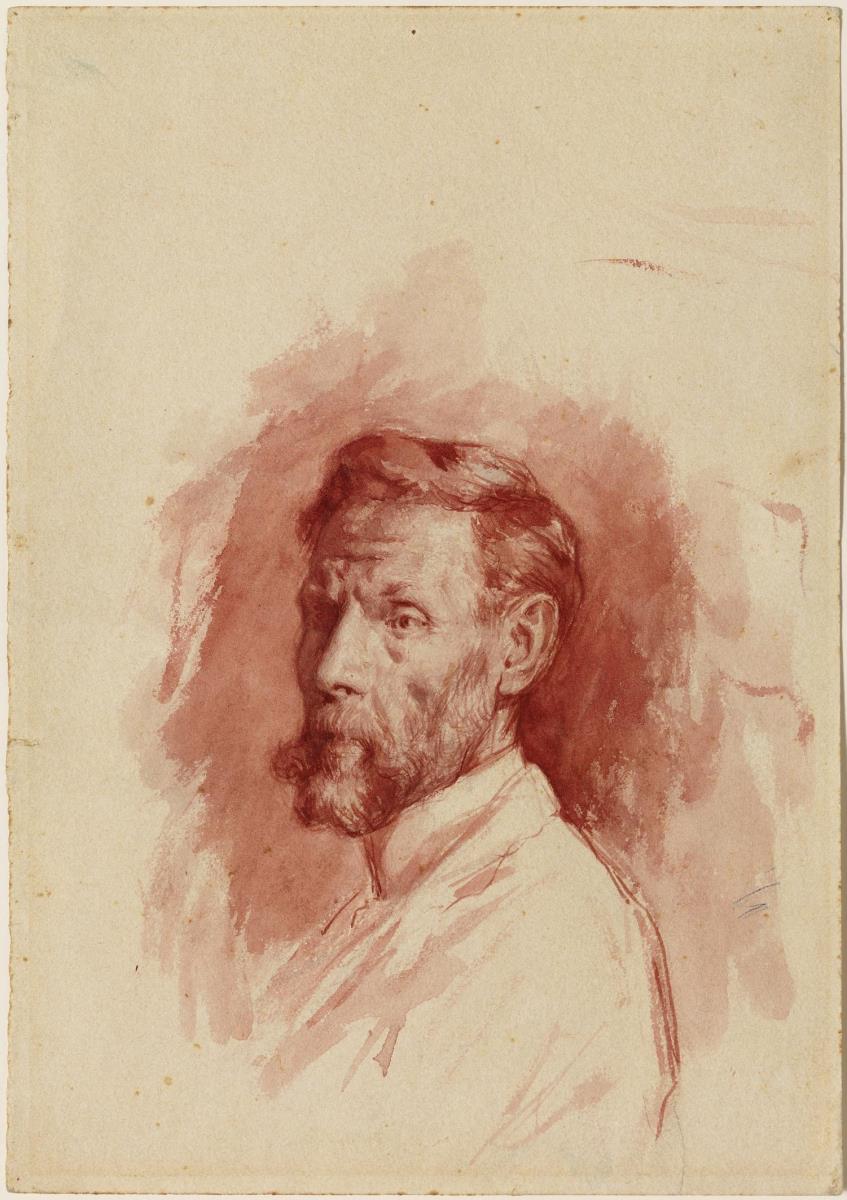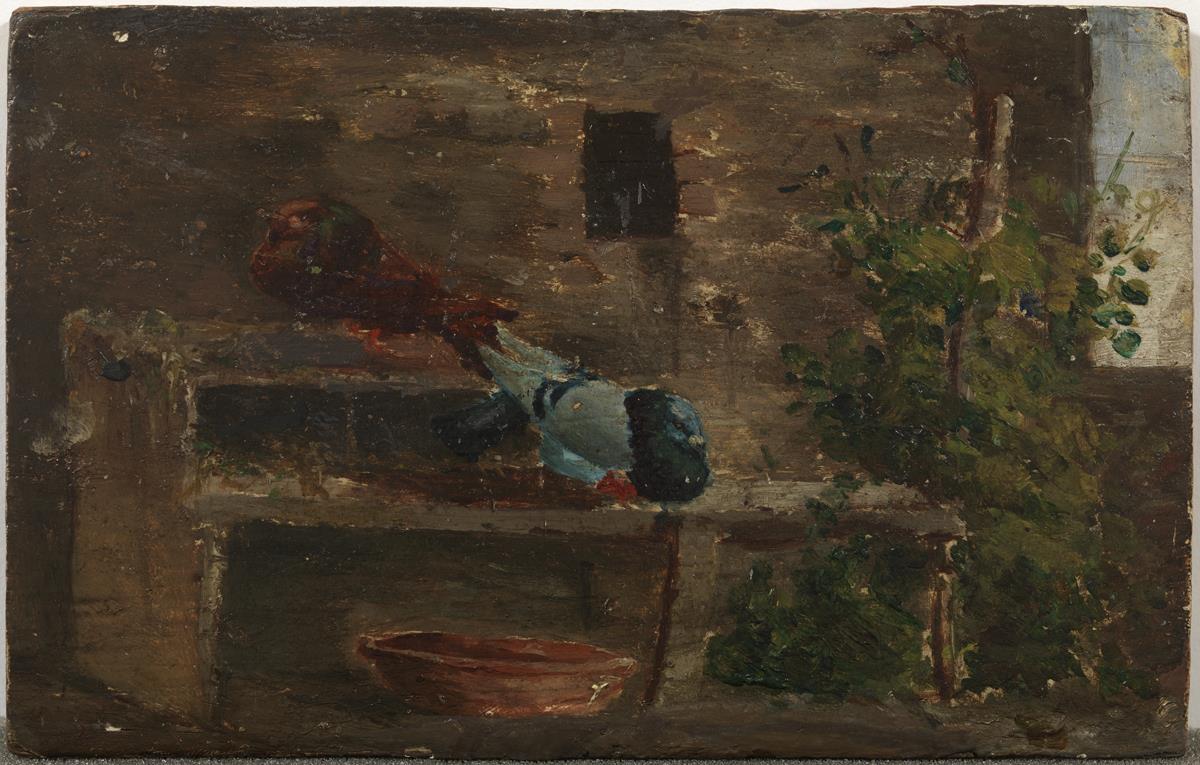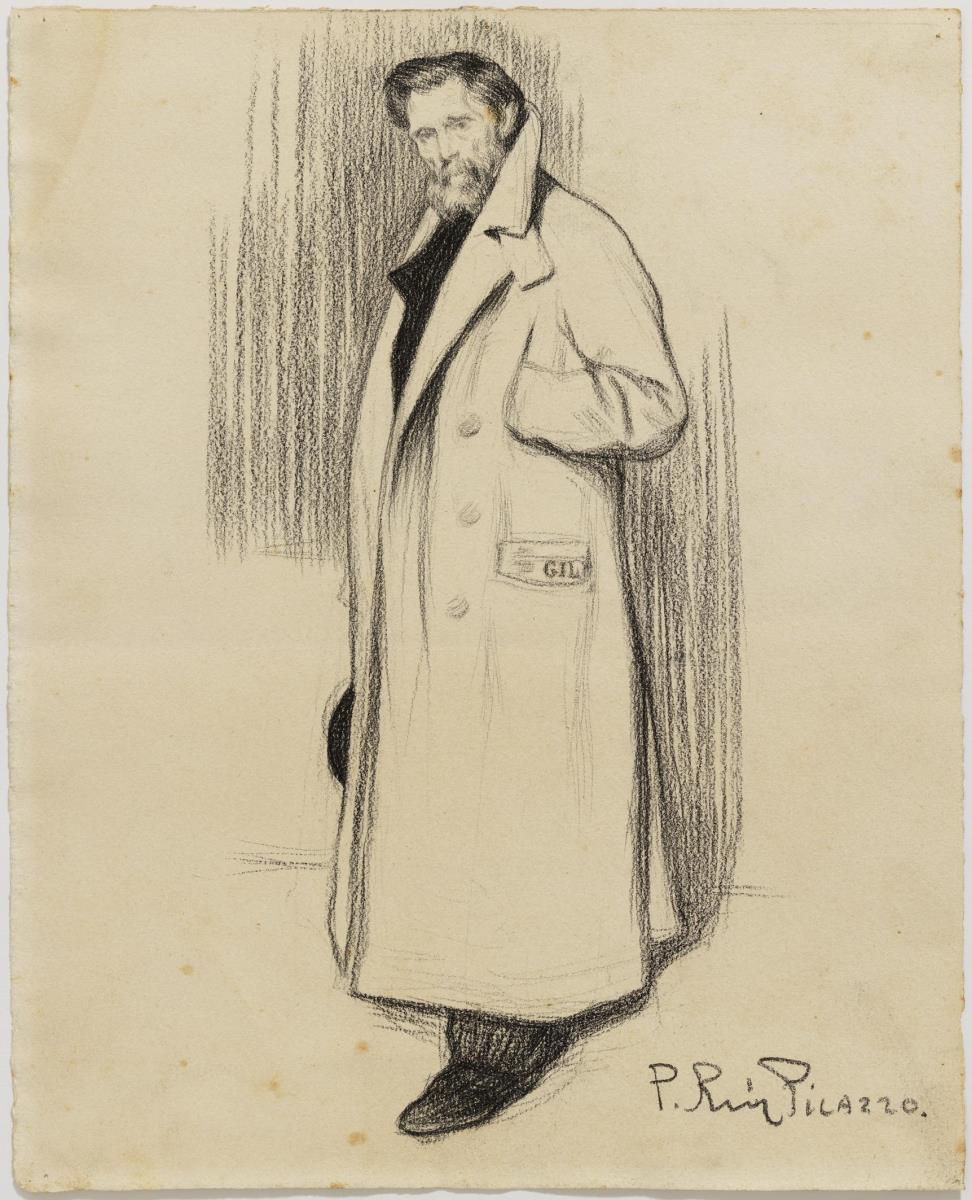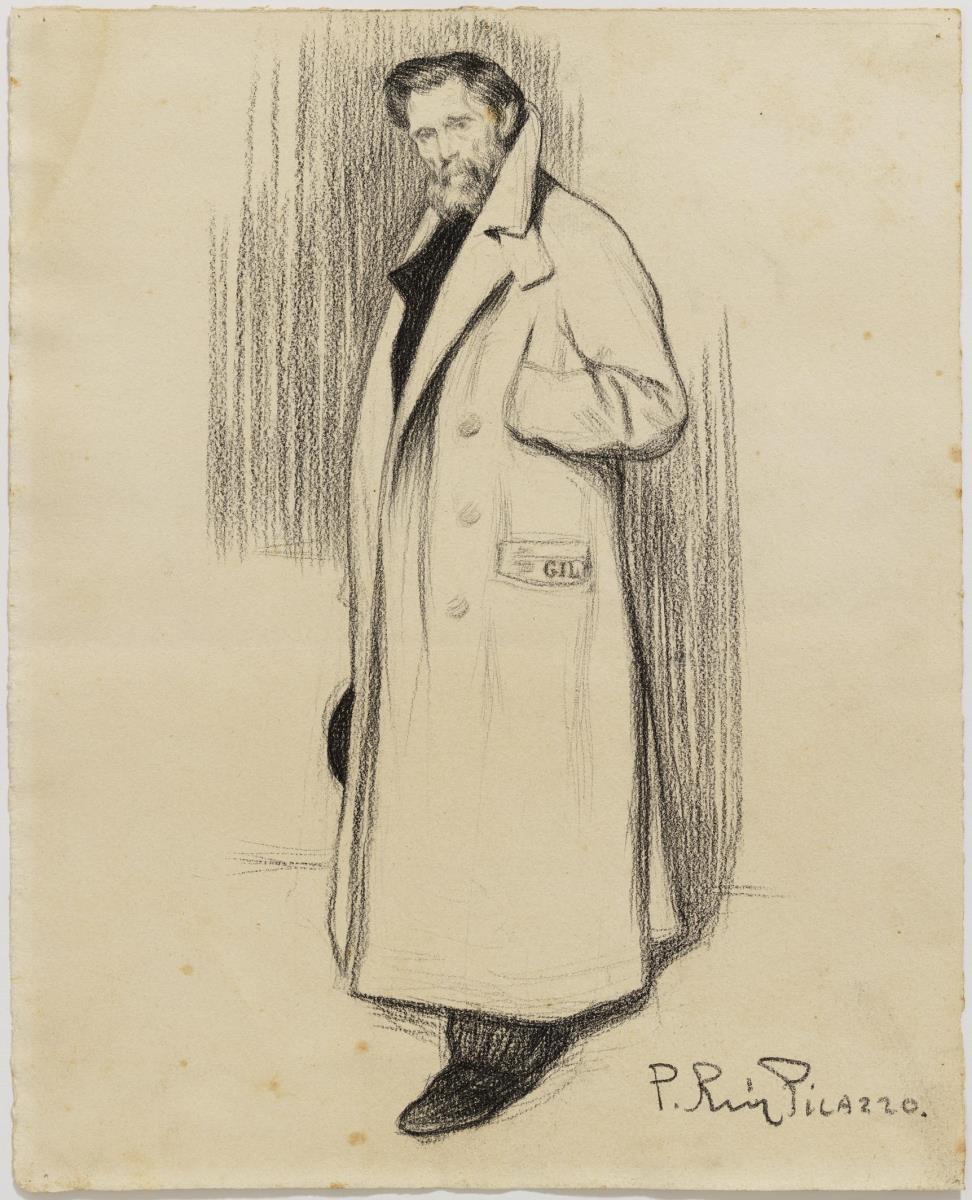An already old Picasso confessed in this way to Brassaï the reason why many of the male characters he portrayed had beards: «Yes, they are all bearded, do you know why? Every time I draw a man, I involuntarily think of my father. For me, the man is Don José and it will be like that all my life... He had a beard... All the men I draw I see whether or not they have their factions».

Picasso, Pablo, El pare de l'artista. Dibuix. Aquarel·la sobre paper. Barcelona, 1896, 25.5 x 17.8 cm. Donació Pablo Picasso, 1970. MPB 110.331
Picasso, Pablo, The artist’s father. Drawing. Watercolour on paper. Barcelona, 1896, 25.5 x 17.8cm. Donation by Pablo Picasso, 1970. MPB 110.331
José Ruiz Blasco (1838-1913) was Picasso's father, teacher and mentor and also the painter's favourite model during the artist's formative years. The 19th-century figure of that tall, blond, elegant man from Malaga with a long beard had very little to do with the physique of Picasso, who looked more like his mother Maria, petite and brunette. But Don José was the protagonist of many of the young Picasso's works, a model who willingly lent himself to pose for a son with extraordinary talent. In the Museum we conserve more than thirty works in which the imposing paternal figure of the artist appears. Don José was aware early on that his son's artistic prowess was out of the ordinary. He knew this even more knowingly because he was also a painter and drawing teacher and did not hesitate from the beginning to guide his son in his first steps as an artist. But who, in reality, was José Ruiz?
Born into a middle-class family in Malaga, José Ruiz lived his youth in the family home, like the somewhat bohemian son. While his brothers improved their social position, José was an art teacher and painted doves, which he raised with passion. It is curious how Don José's favourite animal would become, a century later, the animal that Picasso would popularise as a symbol of peace. Funny, seductive and a lover of revelry during his youth, José Ruiz married María Picasso, 17 years younger, at the age of 42. In addition to being a teacher at the School of Fine Arts in Malaga, he got a job as curator of the Municipal museum of Malaga. His career as a painter did not bring him any income, however. After the museum closed in 1890, Don José was transferred as a teacher to A Coruña.

Picasso, Pablo. Colomar. Pintura a l'oli. Oli sobre fusta. Corunya, la, 1894-1895, 9.9 x 15.3 cm. Donació Pablo Picasso, 1970. MPB 110.131
Don José always accompanied the artistic evolution of the young Picasso. Among the anecdotes told about this tutelage, the one that says the boy finished his father's pigeon paintings by painting the animals' feet stands out. In A Coruña, despite having an active social life, he ended up losing his usual joy. Not only did he miss the sun of Malaga, but also, his 8-year-old daughter Conchita died there. Another of the legends that circulate is that the fact that it was shown so early that Pablo was much more talented than his father could have caused his jealousy. He must have felt frustrated as an artist but that doesn't mean he didn't support his son. Quite the opposite. In A Coruña, Don José exhibited twice in the central shop windows of the city and received very lukewarm reviews. Instead, his very young son, who also exhibited there, was highly praised. It is true that this is the moment when José Ruiz decided to "hang up" his brushes. As a symbolic gesture, he would give his painting material to Pablo.
In Barcelona, where Don José was transferred to work as a teacher at la Llotja, it was when the father's tutelage increased due to the talent of the adolescent Pablo. At this stage, Picasso made numerous portraits of his father, including one in which he is seen carrying the illustrated French literary magazine Gil Blas in his pocket. His father helped him in the creation of works such as Science and Charity, in which he acted as a model, and by renting a studio so that Picasso could paint. It has also been discussed whether the relationship between father and son was one of love-hate, but it seems that the differences between José Ruiz and Picasso simply obeyed a generational issue, and more so considering that there were more than 40 years between them. José Ruiz was always a man of the 19th century and Picasso, on the other hand, had already entered the 20th century with a mentality that looked ahead towards the future.








